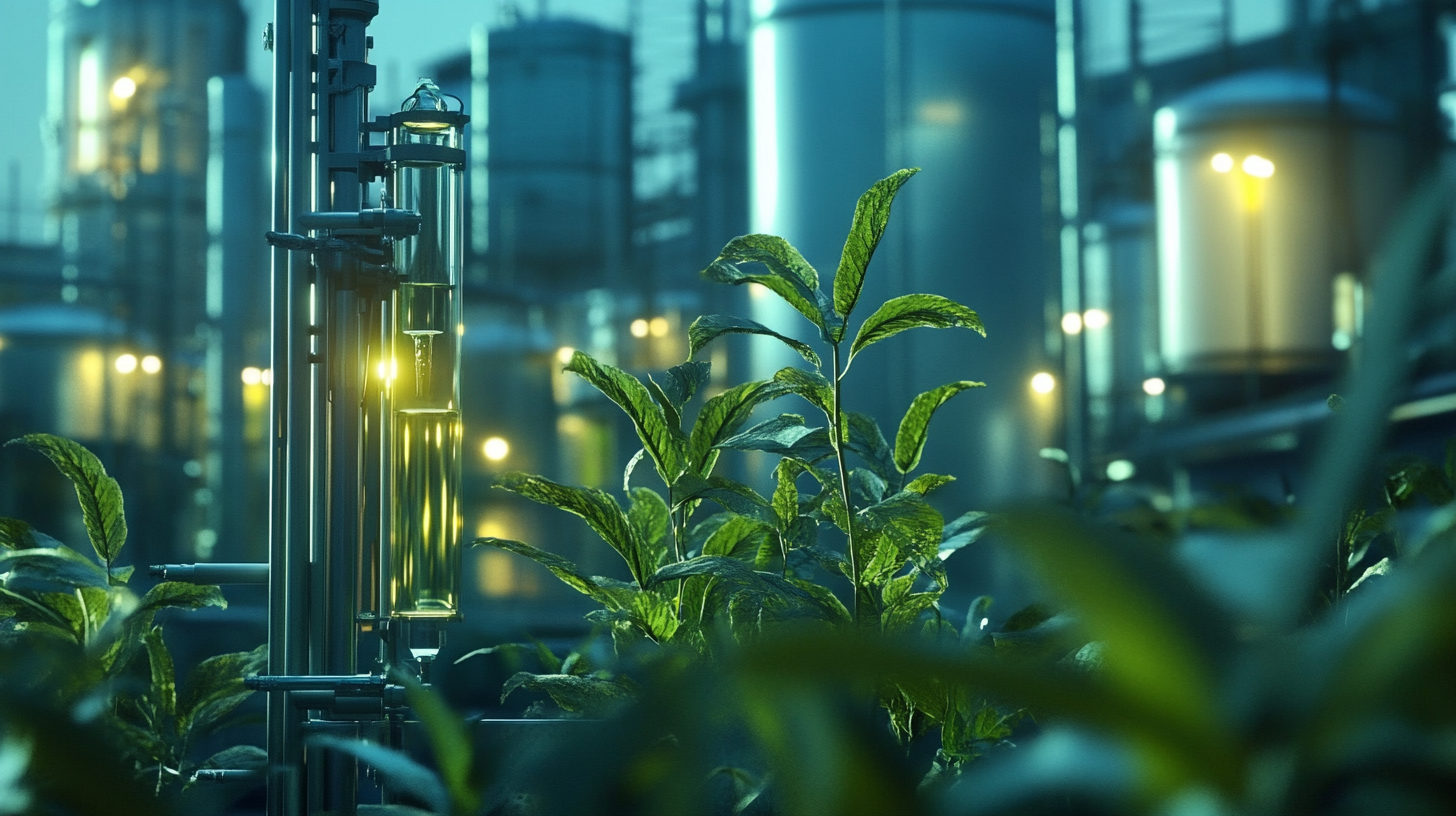The Evolution of Natural Plant Extracts in Modern Industry
The increasing awareness of health and wellness among consumers has significantly propelled the use of Natural Plant Extracts in various sectors, including food and beverage, cosmetics, and pharmaceuticals. According to a recent report by Grand View Research, the global market for natural plant extracts is expected to reach USD 70.3 billion by 2025, growing at a compound annual growth rate (CAGR) of 10.2% from 2019. This surge can be attributed to the rising demand for organic and clean-label products, as consumers are more inclined toward items with natural ingredients over synthetic alternatives.
Moreover, as industries evolve to meet consumer preferences and regulatory standards, the extraction and application methods for Natural Plant Extracts have seen remarkable advancements. Innovative techniques, such as supercritical CO2 extraction and cold pressing, offer enhanced extraction of bioactive compounds while preserving the purity and efficacy of the extracts. According to a report by Mordor Intelligence, the herbal extract market alone is projected to reach USD 25.6 billion by 2026, underscoring the profound impact of natural ingredients in modern formulations. Thus, understanding the evolution of Natural Plant Extracts not only highlights their significance in industry advancements but also paves the way for sustainable and health-focused innovations.

The Historical Roots of Plant Extracts in Traditional Medicine
Throughout history, natural plant extracts have played a pivotal role in traditional medicine across various cultures. Ancient civilizations relied on the healing properties of plants long before the advent of modern pharmaceuticals. For instance, the use of herbs such as turmeric in Ayurvedic medicine and ginseng in Traditional Chinese Medicine illustrates how indigenous knowledge has harnessed the therapeutic benefits of nature for centuries. These practices not only highlight the empirical understanding of plant properties but also suggest a deep cultural reverence for the natural world. The transition from traditional remedies to more structured methodologies in the use of plant extracts began during the Age of Enlightenment. Scholars and healers started documenting the effects of specific botanicals, leading to a more systematic approach to natural medicine. This shift paved the way for the burgeoning field of phytochemistry, which studies the chemical compounds in plants and their potential medicinal applications. The extraction processes, ranging from simple infusions to advanced techniques like steam distillation and ethanol extraction, have allowed practitioners to isolate active ingredients, enhancing efficacy and versatility in treatment options. Today, the legacy of traditional medicine continues to influence modern industry. With a growing trend toward holistic health and natural remedies, many companies are investing in research to validate the efficacy of these age-old practices. As consumers increasingly seek alternatives to synthetic drugs, the resurgence of interest in plant extracts as both health supplements and functional ingredients in cosmetics and food products demonstrates a full-circle return to our botanical roots. This evolution reflects an enduring quest for wellness that remains deeply intertwined with the knowledge of our ancestors.

Key Advances in Extraction Techniques for Enhanced Purity
The evolution of natural plant extracts has been largely influenced by significant advances in extraction techniques. Traditional methods such as Soxhlet extraction have been effective, yet modern industry demands higher purity and yield, pushing the boundaries of extraction science. Recent innovations such as supercritical fluid extraction (SFE) and ultrasonic-assisted extraction have proven to enhance the quality and purity of plant extracts. According to a report by MarketsandMarkets, the global supercritical fluid extraction market is projected to reach USD 1.3 billion by 2025, indicating a growing trend towards these advanced methods.
In the context of enhanced purity, these new extraction technologies allow for the selective isolation of bioactive compounds while minimizing the presence of unwanted solvents or contaminants. For instance, SFE utilizes supercritical carbon dioxide as a solvent, which is non-toxic and leaves no residue, making it ideal for extracting essential oils and other high-value compounds. A 2022 study published in the Journal of Agricultural and Food Chemistry found that SFE produces extracts with up to 30% increased purity compared to traditional methods, demonstrating a significant step forward in industrial applications.
Furthermore, ultrasonic-assisted extraction has emerged as a game changer in terms of efficiency and speed. This technique employs ultrasound waves to improve mass transfer during the extraction process, resulting in shorter extraction times and higher yields. Research from the International Journal of Food Science & Technology indicates that ultrasound can reduce extraction times by up to 75%, all while producing extracts of comparable if not superior quality to those obtained through conventional techniques. As industry standards continue to rise, these advances in extraction methods are essential for meeting consumer demand for pure and potent natural plant extracts.

The Role of Natural Plant Extracts in Sustainable Product Development
Natural plant extracts have become increasingly significant in sustainable product development, reflecting a growing awareness of environmental issues and consumer preferences for eco-friendly solutions. These extracts, derived from a multitude of botanical sources, offer a diverse range of benefits—ranging from natural preservatives to functional ingredients in cosmetics and food products. As industries shift towards greener practices, the incorporation of these plant-based materials not only reduces reliance on synthetic chemicals but also supports biodiversity and sustainable agriculture.
Moreover, the versatility of natural plant extracts makes them invaluable to various sectors, including food, cosmetics, and pharmaceuticals. For instance, many companies are turning to botanical antioxidants and phytochemicals as alternatives to artificial preservatives, tapping into consumer demand for transparency and health-conscious options. This trend indicates a broader movement towards holistic formulations that prioritize the well-being of both the individual and the planet. By integrating natural extracts, brands can enhance their sustainability credentials while delivering quality products that resonate with eco-aware consumers.
In addition to their functional benefits, natural plant extracts often carry cultural and historical significance, connecting products to traditional practices and local communities. This holistic approach not only elevates the value of the products but also supports fair trade and ethical sourcing. As industries continue to evolve, the synergy between traditional knowledge and modern innovation will pave the way for sustainable product development, ensuring that natural plant extracts remain at the forefront of responsible manufacturing practices.

Market Trends: Consumer Demand for Plant-Based Ingredients
The market for plant-based ingredients is experiencing a remarkable transformation, driven by a substantial increase in consumer demand for natural and health-oriented products. According to recent data, the global plant-based food market is projected to grow at a compound annual growth rate (CAGR) of 12.1%, signaling a robust interest in alternatives that support a sustainable and healthier lifestyle. This shift is evident across various segments, with the U.S. alternative protein ingredients market also seeing significant growth, particularly in plant proteins that cater to consumers seeking allergen-free options.
One of the standout players in this evolution is the blueberry ingredient market, which is expected to showcase a CAGR of over 6.83% from 2025 to 2032. This growth mirrors the rising recognition of blueberry's health benefits, leading to increased use in food products, beverages, and supplements. Moreover, the anthocyanin food colors market is experiencing a steady ascent, with market value rising significantly, reflecting consumers' preference for natural colorants derived from plants.
The fermented plant-based alternatives sector is another noteworthy contributor, projected to grow from approximately USD 45.1 million in 2023 to over USD 48.9 million by 2032. This trend underscores an evolving consumer palate that embraces not only nutrition but also innovative flavors and textures found in fermented products. As the demand for vegan ingredients continues to expand, estimated to reach USD 5.8 billion by 2024, it is clear that the evolution of natural plant extracts is set to play a pivotal role in shaping the future of the food industry.
Innovative Applications of Plant Extracts in Health and Beauty Industries
The innovative applications of plant extracts in the health and beauty industries are transforming conventional products into scientifically backed solutions. Recent research on Muscadine grape skin extract reveals its rich array of phytochemicals, including powerful antioxidants, which may play a vital role in cancer treatment. These findings highlight the potential of plant extracts not only in skin care but also in serious health interventions, marking a significant leap forward in therapeutic applications.
Moreover, the trend of harnessing plant-based solutions is further evident with the launch of global initiatives focused on botanical extract development. Such efforts emphasize sustainable practices and innovation within the beauty sector. One notable advancement includes the extraction of compounds from Centella Asiatica, aligning perfectly with the growing demand for clean beauty products that cater to eco-conscious consumers. Reports indicate that almost 73% of consumers are now more inclined to purchase beauty products featuring natural ingredients, showcasing the industry's shift towards purity and sustainability.
Additionally, breakthroughs stemming from academic research—like the use of vegan collagen developed through plant-based science—are redefining beauty standards. Clinical studies have demonstrated that this biomimetic collagen significantly enhances skin density and elasticity, further validating the integration of science and nature in skincare formulations. These advancements underline the expanding role of botanicals, setting a new benchmark for efficacy and safety in the evolving landscape of health and beauty products.

